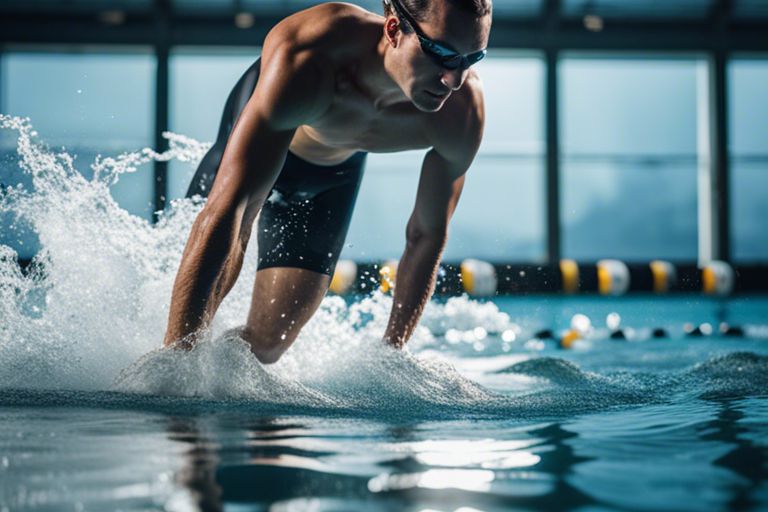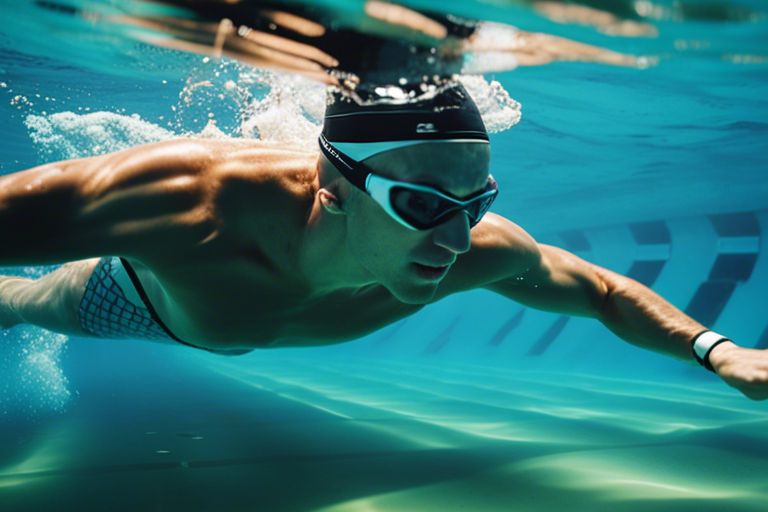Over the years, swimming with fins has been a popular choice for fitness enthusiasts looking to strengthen their muscles. But the question remains – does this aquatic exercise truly help build muscle mass? Let’s explore into the science behind swimming with fins and its effects on muscle development.
Key Takeaways:
- Swimming with fins can help build muscle: Using fins while swimming can increase resistance, leading to a more intense workout that engages and strengthens different muscle groups.
- Fins promote muscle endurance: Fins allow for longer and more sustained swimming sessions, which can help improve muscle endurance over time.
- Varying fin workouts is key: To target different muscle groups and prevent plateauing, it’s important to switch up swimming routines with fins by adjusting speed, intensity, and strokes.

The Science Behind Swimming with Fins
How Fins Affect Stroke Technique
Fins can help swimmers improve their stroke technique by providing added propulsion and lift in the water. They can assist in developing a more efficient and powerful kick, leading to better body position and overall performance.
Increased Resistance and Muscle Engagement
One key benefit of swimming with fins is the increased resistance they provide. This added resistance forces the muscles to work harder, resulting in greater muscle engagement and strengthening. Swimmers can target specific muscle groups, such as the quadriceps, hamstrings, and calves, leading to improved strength and endurance.
Increased muscle engagement during fin swimming can also enhance cardiovascular fitness and help prevent injuries by promoting balance and stability in the water.

Muscle Groups Targeted by Swimming with Fins
There’s a reason why swimming with fins is a popular choice for many athletes looking to build muscle. This activity targets several key muscle groups, making it an effective full-body workout that can help improve strength and endurance.
Leg Muscles: Calf, Hamstring, and Quadriceps
Hamstring, calf, and quadriceps muscles are all engaged when swimming with fins. The kicking motion required to propel the body forward works these muscles, helping to tone and strengthen them. This can lead to better performance in other activities that require leg strength.
Core Muscles: Abdominals and Obliques
On top of engaging the leg muscles, swimming with fins also works the core muscles, including the abdominals and obliques. These muscles help stabilize the body in the water and are crucial for maintaining proper form and technique while swimming.
Understanding the importance of a strong core can help swimmers improve their overall performance and prevent injuries. By incorporating swimming with fins into your workout routine, you can effectively target these key muscle groups and see improvements in both strength and endurance.

Benefits of Swimming with Fins for Muscle Building
Improved Cardiovascular Endurance
Keep your heart pumping and your muscles working hard with the use of fins during your swimming routine. Fins add resistance in the water, requiring your heart to work harder and increasing your cardiovascular endurance.
Enhanced Muscle Strength and Endurance
An added bonus of swimming with fins is the enhanced muscle strength and endurance that comes with it. Fins help engage and strengthen muscles in your legs, core, and back, leading to improved overall muscle endurance.
Endurance, coupled with stronger muscles, can help you swim longer and more efficiently, translating to better overall fitness and muscle development.
Summing up
So, swimming with fins can indeed help build muscle, especially in the legs, core, and shoulders. The increased resistance provided by fins can enhance muscle strength and endurance over time. Incorporating fins into your swim workouts can be a beneficial way to challenge your muscles and improve overall swimming performance. Keep in mind, consistency is key when aiming to build muscle through swimming with fins.
FAQ
Q: Does swimming with fins build muscle?
A: Yes, swimming with fins can help build muscle. Fins add resistance to your leg movements, which increases the intensity of your workout. This can lead to greater muscle engagement and ultimately, muscle growth.
Q: What muscle groups are targeted when swimming with fins?
A: Swimming with fins primarily targets the muscles in your legs, such as the quadriceps, hamstrings, calves, and glutes. Additionally, your core muscles work to stabilize your body during the movements, providing a full-body workout.
Q: Can swimming with fins help improve cardiovascular fitness in addition to building muscle?
A: Absolutely! Swimming with fins not only strengthens muscles but also improves cardiovascular endurance. The increased resistance from the fins challenges your heart and lungs, leading to improved overall fitness levels.



